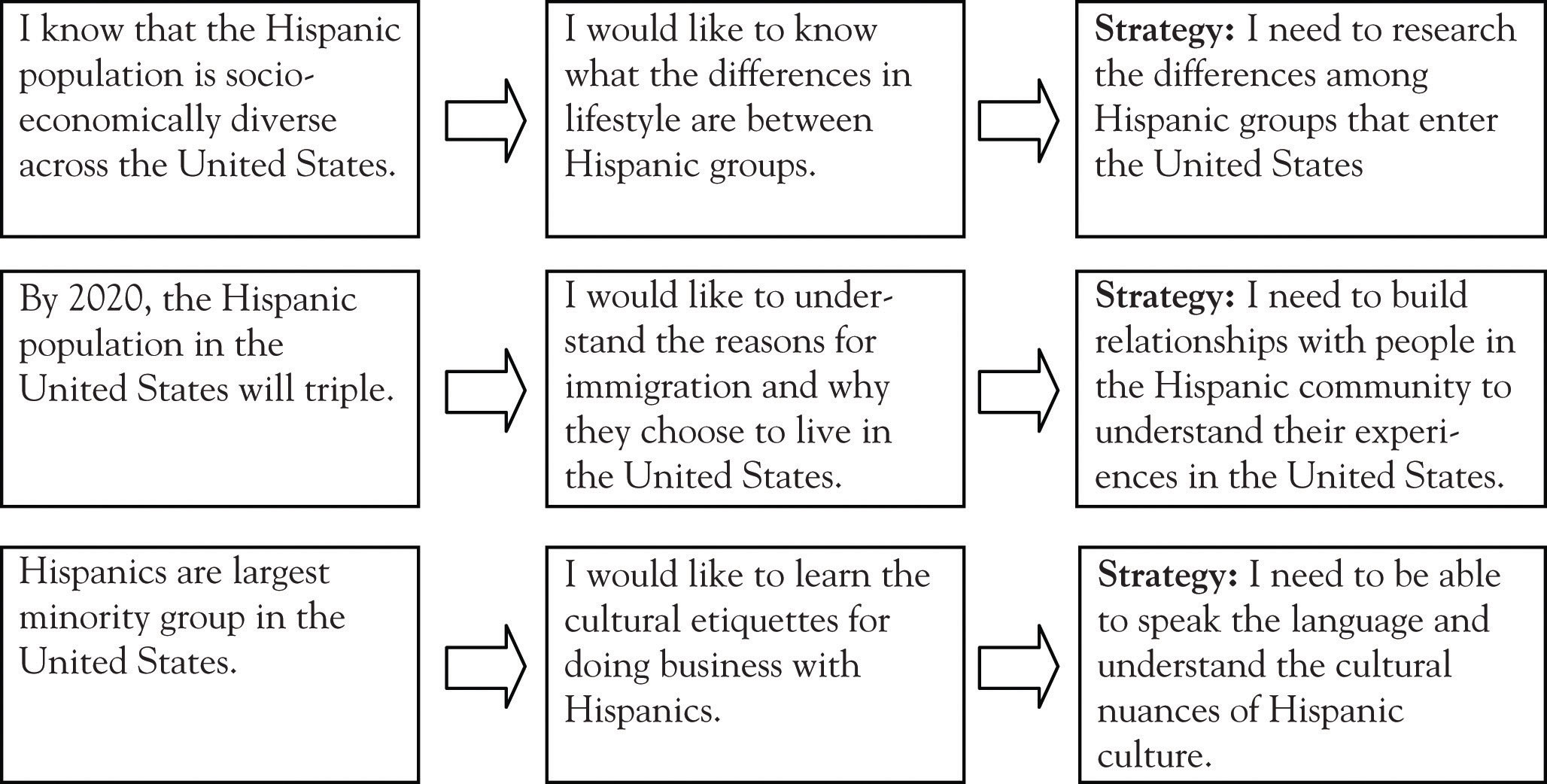How can you improve your strategic thinkingReasoning related to creating strategies in line with the business and competitive goals of an individual or an organization in a global environment.? Basic strategies for improving thinking include (a) connecting new information with what you already know, (b) selecting your thinking strategies carefully and intentionally, and (c) planning, monitoring, and evaluating your thinking strategies and processes.
Strategic thinking is “thinking about thinking.” It is being conscious of your thinking processes, such as how you have gathered and organized the information and experience in your memory (old information), and then how you reorganize it (new information) to fit a new situation. You have to connect the new information to what you already know in order to help make sense of what actions to take. You can do this by identifying what you know and what you do not know about a cultural situation. Here is an exercise to help you identify old and new information. Take a sheet a paper and draw a line down the middle of the sheet to create two columns. At the top of the left column, write, “What I know,” and at the top of the right column, write, “What I want to learn.” As you research, explore, and interact with a cultural situation, people, or information, you will learn to clarify, revise, verify, or expand your understanding of the situation.
Let us look at the example of Betsy, who is a product manager for a local distributor of processed foods and snacks. With a growing Hispanic population that has an increasingly large purchasing power in the United States, her company wants to expand into the market and seize on this opportunity and potential for growth. This is not a new market for the business, but it requires that her team think strategically about what they know and do not know about this consumer base.
Table 4.1 Identification of Knowledge Gaps
| What I Know | What I Want to Learn |
|---|---|
| Between the years 1991–2013, the projected growth of Hispanic purchasing power is 560%. | Differences in lifestyles among Hispanic groups. |
| Hispanics are the largest minority group in the United States. | Reasons for immigration or coming to the United States. |
| By 2020, the U.S. Hispanic population will triple. | Cultural etiquette in doing business with Hispanics. |
| Family is central to Hispanic communities. | History of Hispanic culture in the United States. |
| A large percentage of Hispanic families are from low-income families. |
Next, Betty and her team will need identify the strategies that will help them to be more intentional with their work.
Based on this exercise, Betty has identified strategies that will connect new information to the old in the following ways:
Figure 4.1 Creating Intentional Strategies

By connecting old information with the new, Betty is making conscious choices and decisions about what she knows and what she does not know. This sets her up with strategies that are most appropriate for her. Strategic thinking is most useful when you find strategies that work appropriately for your level of knowledge, building upon what you know. As indicated earlier in the chapter, if this new knowledge is basic information and Betty does not have this, she can be easily distracted, which may create interruptions in her learning and practice of strategic thinking.
As Betty collects information related to her actions, she will add or revise her strategies, as needed, because her knowledge base has grown and what was “new information” at one time is now old information. Betty will put in place strategies that help her to monitor her progress toward her goal as well as to evaluate how she thinks about each strategy. Because the information is new to her, and if the information is basic knowledge that she needs, she will need to pay attention to her mind’s ability to be easily distracted. When she is aware of this, she can retrain her brain to identify the distraction and then refocus on her goals. There are a variety of strategies she can use to plan, monitor, and evaluate her progress.
One strategy Betty has employed is to create the time and space with her team to discuss her cultural experiences. This allows her to process, out loud, the knowledge she has obtained and forces her to think about her thinking, that is, her metacognition. Because she puts this strategy in place, she can understand what her mind is processing during her learning, and she is then able to identify and focus on her strengths and improve upon her weaknesses. When she does this with a group, her peers help her to learn about her thinking while she helps them to learn about their learning processes.